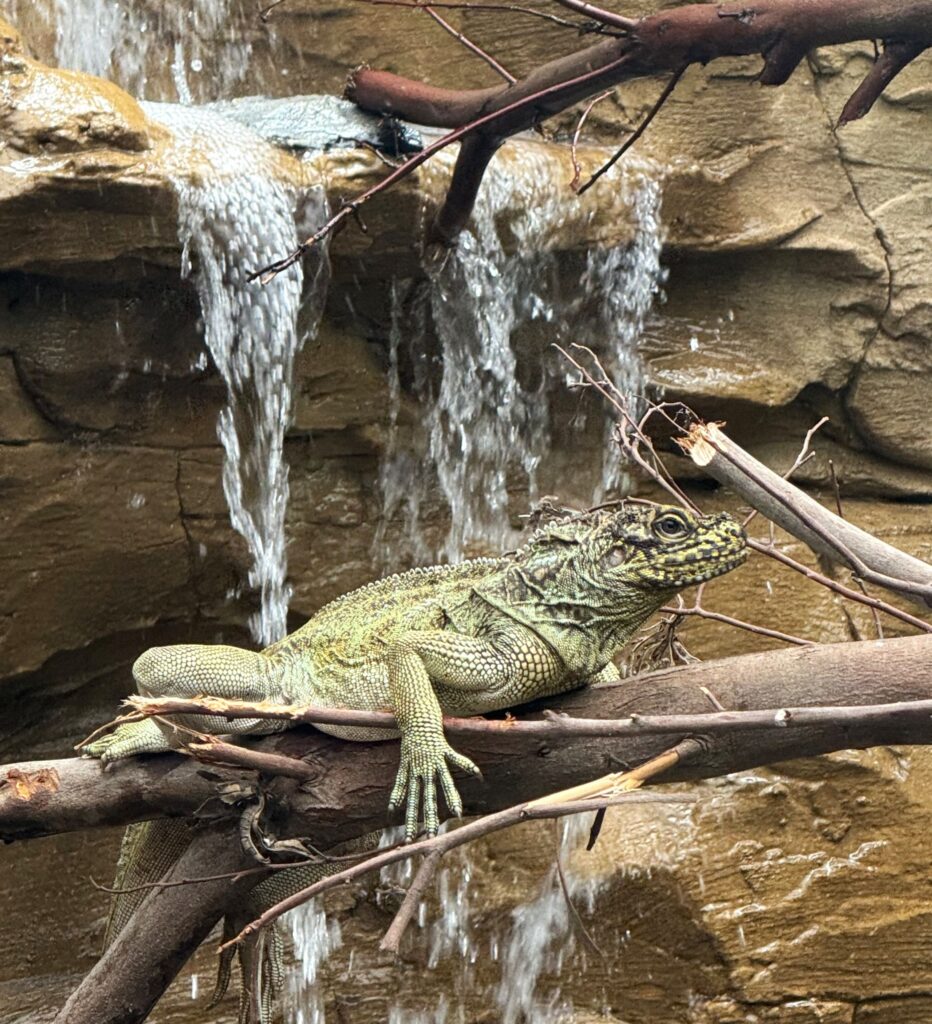PHILIPPINE SAILFIN DRAGON
Hydrosaurus pustulatus

LENGTH

120 cm
WEIGHT

2,5kg
LIFESPAN

20 years
The Philippine sailfin dragon is a large semi-aquatic agamid lizard endemic to all major island groups in the Philippines, with the exception of the Palawan Islands. They live in areas of heavy vegetation, particularly mangrove forests, and are excellent swimmers.
General characteristics
The sailfin dragon can be easily distinguished by the large sail-shaped dorsal ridges on their tails, hence the name. This ridge extends from the base of the tail to the lower back. Although its main function is to facilitate swimming, as they use the tail to propel themselves through the water more quickly, it is also thought to play an important role in the lizard’s territorial displays and in regulating their body temperature in different environments.
Another unique feature of the Philippine sailfin dragon is that it has a vestigial eye (also known as a parietal or pineal eye) on the top of the skull, which can detect different angles of sunlight and is thought to be used for orientation.
These lizards are large, generally reaching a length of between 60 and 90 centimetres, including the tail. Males, which are larger than females, can reach 90-120 centimetres. They also have more prominent crests, larger heads, higher tail candles and darker limbs.
Their weight usually ranges from 1.4 to 2.5 kg. As for the colouring, their scaly skin exhibits shades of dark green and brown, although they may also have yellow spots on the back of the body and near the head. Their flattened toes, fringed with scales, allow them to both swim and walk on water.
Feeding
The sailfin dragons are omnivorous. They eat plant leaves and fruits, as well as insects and crustaceans.
The omnivorous diet of these animals is also reflected in the relative simplicity of their dentition, especially in the posterior teeth, which have less well-defined tricuspids. As a result, they cannot be primarily carnivorous, as their teeth are not designed for this.
Behaviour
Philippine sailfin dragons are diurnal animals and spend most of the day resting on vegetation in the sun or foraging for food. They often perch in trees overhanging the water. In the presence of predators, they dive into the water and swim to the bottom to escape danger. They can remain underwater for up to 15 minutes.
These lizards are territorial. Males, in particular, defend their area from other males by display and sometimes physical confrontation. This territoriality helps to reduce the risk of conflict and to ensure that resources such as food and space are available to the dominant lizard. Outside of the mating season, they tend to live and move about alone. Each individual has its own territory and does not usually form permanent social groups or associations.
Reproduction
Reproduction of Philippine sailfin dragons occurs only once a year, with the possibility of several clutches of eggs, each of which may contain between two and eight eggs. To incubate them, females dig relatively shallow holes in the ground near their aquatic habitats, but always above the incubation line.
Eggs incubate for about two months and hatch during the rainy season, giving rise to hatchlings with a natural agility that allows them to evade predators by running on water, unlike adults, which must swim.
Threats
This species is classified as Least Concern by the IUCN, although they are becoming increasingly vulnerable. Its main threats are habitat loss, hunting for food and collection for the pet trade. Habitat loss is particularly crucial, as only 7.5% of the Philippines‘ mangrove forests are in protected areas and in the last 75 years, 75% of the Philippines’ mangrove forests have been lost to urban development and aquaculture.
Distribution
The sailfin dragons are found on all Philippine islands except Palawan. They live in tropical forests near water, such as rivers, riverbanks, rice fields and mangroves. They also prefer to reside near freshwater bodies.

Did you know?
Philippine crested hydrosaurs can walk on water with their flattened toes, especially the younger ones because they are the lightest.
During the breeding season, the male lizard’s head turns purple, while in females only the neck crest may turn purple.
They have a ‘third eye’ on the top of their head which acts as a sensor that allows them to sense sunlight.
Conservation status
